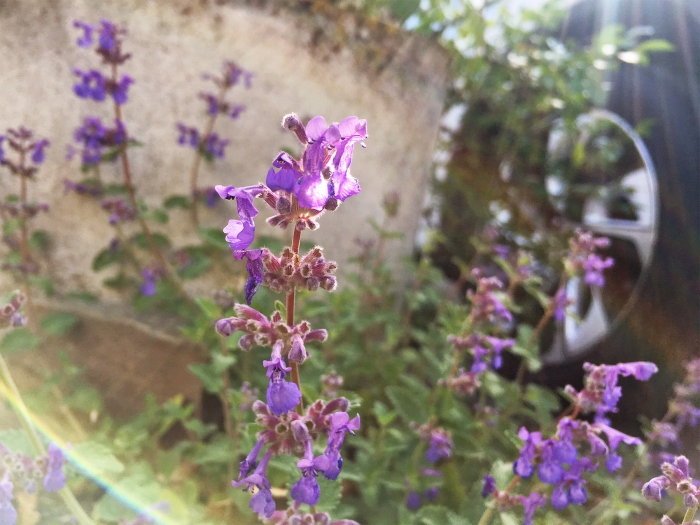Dwarf Catnip
(Nepeta racemosa)
Dwarf Catnip (Nepeta racemosa)
/
/

Kai Löhr
CC BY 4.0
Image By:
Kai Löhr
Recorded By:
Copyright:
CC BY 4.0
Copyright Notice:
Photo by: Kai Löhr | License Type: CC BY 4.0 | License URL: http://creativecommons.org/licenses/by/4.0/ | Rights Holder: Kai Löhr | Publisher: iNaturalist | Date Created: 2019-05-06T09:05Z |

















































Estimated Native Range
Summary
Nepeta racemosa, commonly known as dwarf catnip or raceme catnip, is a herbaceous perennial plant in the mint family Lamiaceae, native to rocky slopes and scrublands in the Caucasus, Turkey, and northern Iran. It typically grows to 30 cm (12 in) tall by 45 cm (18 in) wide, featuring aromatic, gray-green foliage and spires of violet or lilac-blue flowers that bloom in summer. The flowers are modestly showy and attract pollinators such as bees and butterflies.
Dwarf catnip is valued for its drought tolerance, low maintenance requirements, and the euphoric effect it has on domestic cats. It is often used in gardens for border fronts, rock gardens, and as ground cover, providing a long-lasting display of color. The plant thrives in full sun to part shade and prefers well-drained soil, tolerating a range of soil types from sandy to loamy. It is generally pest-free but can be susceptible to powdery mildew in humid conditions. ’Walker’s Low’ is a popular cultivar known for its robust growth and extended flowering period. Nepeta racemosa can spread readily by seed, so deadheading is recommended to prevent unwanted self-seeding.CC BY-SA 4.0
Dwarf catnip is valued for its drought tolerance, low maintenance requirements, and the euphoric effect it has on domestic cats. It is often used in gardens for border fronts, rock gardens, and as ground cover, providing a long-lasting display of color. The plant thrives in full sun to part shade and prefers well-drained soil, tolerating a range of soil types from sandy to loamy. It is generally pest-free but can be susceptible to powdery mildew in humid conditions. ’Walker’s Low’ is a popular cultivar known for its robust growth and extended flowering period. Nepeta racemosa can spread readily by seed, so deadheading is recommended to prevent unwanted self-seeding.CC BY-SA 4.0
Plant Description
- Plant Type: Herb
- Height: 0.8-1 feet
- Width: 1-1.5 feet
- Growth Rate: Rapid
- Flower Color: Blue, Purple
- Flowering Season: Spring, Fall
- Leaf Retention: Deciduous
Growth Requirements
- Sun: Full Sun, Part Shade
- Water: Low, Medium
- Drainage: Medium, Fast
Common Uses
Bank Stabilization, Bee Garden, Bird Garden, Border Plant, Butterfly Garden, Deer Resistant, Drought Tolerant, Fragrant, Groundcover, Hummingbird Garden, Low Maintenance, Potted Plant, Rabbit Resistant, Rock Garden, Salt Tolerant, Showy Flowers, Street Planting
Natural Habitat
Rocky slopes and scrublands
Other Names
Common Names: Dwarf Catnip, Traubige Katzenminze, Blauw Kattenkruid, Bergnepeta, Kantnepeta
Scientific Names: , Nepeta racemosa, Glechoma racemosa,
GBIF Accepted Name: Nepeta racemosa Lam.